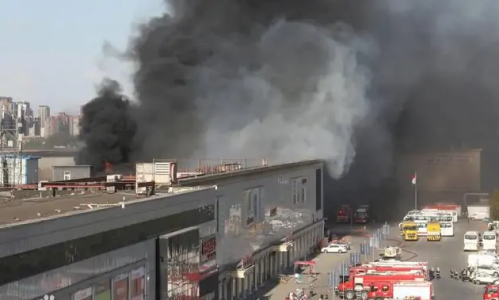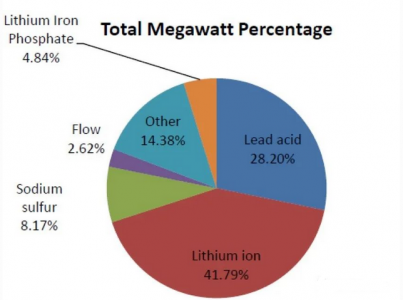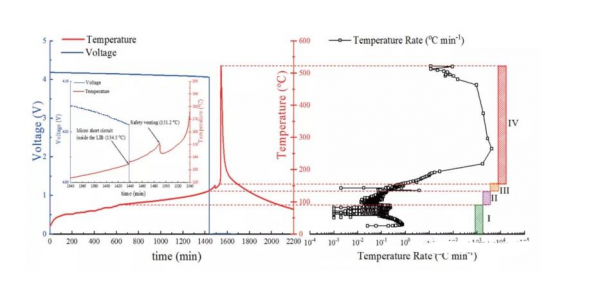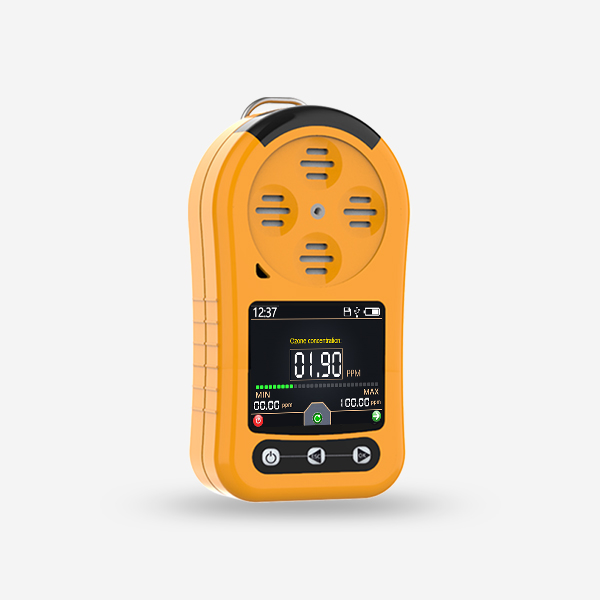In recent years, fire and explosion accidents of energy storage power stations are common. According to statistics, there have been more than 30 fire accidents of energy storage power stations around the world in the past year. Since August 2017, there have been 29 fires at energy storage plants in South Korea alone. In addition, on April 19, 2019, an explosion at a battery storage project in Arizona injured four firefighters, two of whom were seriously injured. On the afternoon of April 16, 2021, an energy storage power plant in Fengtai District of Beijing caught fire due to thermal control. The accident killed an electrician on duty, killed two firefighters and injured another. The fire caused direct property losses of 16.608 million yuan. It can be seen how terrible the energy storage power station is once an accident occurs.

What is an energy storage station? Think of it as a large power bank, with a commercial megawatt capacity and a smaller home capacity. In order to facilitate the installation and transportation, the standard container specifications are usually made of outsourcing boxes.

The energy storage power station is not all lithium battery, lead-acid battery, liquid flow battery, sodium sulfur battery, flywheel ah, superconducting ah are also pumped storage, theoretically speaking, is also a way of energy storage, but now the lithium battery is strong, accounting for a relatively high.
The electrochemical energy storage industry has broad prospects, but when the heat is out of control, it may cause fire or even explosion, and produce toxic gas, resulting in economic losses and casualties. This paper introduces the characteristics and hazards of fire accidents in electrochemical energy storage power stations, and puts forward prevention and control measures.
In recent years, the exhaustion of fossil energy and the greenhouse effect caused by it make people abandon the traditional energy gradually. More and more new energy sources, such as solar energy, hydrogen energy and wind energy, are being connected to the electric power system. Among them, lithium ion battery has become the main force of electrochemical energy storage due to its advantages of long cycle life, high working voltage, high energy density, small self-discharge and so on. According to the Guidance of National Development and Reform Commission and National Energy Administration on Accelerating the Development of New Energy storage (Development and Reform Energy Regulation (2021) No. 1051), by 2025, the installed scale of new energy storage will reach more than 30 million kW. Therefore, electrochemical energy storage industry has a broad prospect.
However, thermal runaway occurs when lithium-ion batteries are overheated, overcharged and overdischarged, short-circuit and so on. When the heat is out of control, a violent exothermic reaction occurs inside the battery, generating a large amount of heat and toxic flammable gas, and may cause fire or even explosion. At the same time, toxic gas will also threaten people’s life safety, and then cause a large number of economic losses and casualties. Therefore, in order to prevent the fire accident of electrochemical energy storage power station, effective prevention and control measures are needed.
Fire characteristics and hazards of power station
1. The battery heats up quickly and the temperature is high
When the battery is abused, the temperature of the battery increases gradually, and the materials inside the battery, such as anode and cathode materials and electrolyte, react successively. The heat generated by these exothermic reactions slowly accumulates in the battery, which further increases the temperature of the battery and promotes subsequent exothermic reactions.
When the battery temperature reaches the critical thermal runaway temperature, the battery thermal runaway occurs, generating a large amount of heat in a short period of time, and the battery temperature rises sharply. As can be seen from Figure, the surface temperature of the battery rises rapidly from 130℃ to 522℃ when the heat is out of control. Because the exothermic reaction takes place inside the battery, the temperature inside the battery is higher, reaching 800 ~ 900℃ or even 1000℃.

2. The fire burns intensely with a fierce stream of fire
The type of battery commonly used in energy storage plants is mainly square, hard shell batteries, which are often equipped with safety valves to prevent explosion due to excessive pressure. As the temperature of the battery increases, some combustible gases are produced inside the battery. With the accumulation of combustible gas, the internal pressure of the battery increases gradually. When the internal pressure of the battery reaches the rupture threshold of the battery safety valve, the battery safety valve breaks, and a large amount of combustible gas and battery internal materials are ejected.
When the battery thermal out of control, under the action of the extremely high temperature of the battery, combustible gas and combustible material such as electrolyte are ignited, from the safety valve to eject a fierce fire, the flame height can reach 1 meter.
3. Heat is easy to spread out of control
In an energy storage station, batteries are packed tightly together to form modules. When a battery in the module has thermal runaway, the close arrangement allows the heat to be quickly transferred to the adjacent batteries, making the adjacent batteries abnormally warm up. In addition, due to the block of the cover plate, the fierce discharge fire increases the thermal radiation of the adjacent batteries, and the temperature of the adjacent batteries further rises until thermal runaway occurs. Finally, thermal runaway propagation occurs in the battery module.
4. Gases are explosive
When the battery is out of control, a large amount of gas is ejected from the safety valve. The gas is mainly H2, CO, CO2, CH4, C2H4 and the gas generated by the evaporation of the electrolyte at high temperature. Some of the combustible gas will be consumed in combustion, while some of the unburned gas will accumulate in the module. With the continuous expansion of thermal runaway propagation in the module, more and more combustible gas in the module will increase the pressure of the module, which may eventually lead to physical explosion due to excessive pressure.
In addition, the concentration of combustible gas increases gradually. When the explosion limit of the mixture of combustible gas is reached, that is, 6.1% above the explosion limit, the high temperature of the thermal runaway battery acts as the ignition source. When sufficient oxygen is encountered, the combustible gas will undergo chemical explosion, and the maximum explosion pressure can reach 0.76mpa. Huge explosion pressure can cause serious damage to battery cluster and container, and then bring economic loss, even casualties. For example, in the April 16 fire accident of an energy storage power station in Fengtai, Beijing, an explosion occurred in the power station, resulting in the death of two firefighters.
5. Gases are toxic
Some gases produced by thermal runaway battery are not only flammable, but also highly toxic, such as CO, HF (hydrogen fluoride).

As you can see, there’s a large proportion of CO and CO2. When the heat is out of control, the concentration of CO can reach more than 250ppm, which can cause serious poisoning harm to human body.
HF is an irritant, toxic and corrosive gas that poses a risk of death after a few minutes at 50ppm. However, when a 100%SOC lithium iron phosphate battery with a capacity of 20Ah loses thermal control, the maximum HF concentration is about 145ppm, which is far higher than the prescribed HF safe concentration. There are hundreds of batteries in a container of an energy storage power station. When heat is out of control, the concentration of these toxic and harmful gases will increase sharply, greatly increasing the risk of personnel operation and rescue.
How to prevent?
At present, there is no way to ensure that lithium batteries do not lose control of heat, and there is no way to timely find ways to prevent lithium batteries from losing control?
Early detection and warning of fire in electrochemical energy storage plant
In the early stage of battery fire, effective and accurate detection and early warning should be carried out, and corresponding fire fighting measures should be taken to prevent the further spread of fire. Before the safety valve is opened, battery fault diagnosis should be done and early warning should be carried out. When the battery safety valve is opened, a large amount of gas and smoke will be generated. For example, the volume fraction of CO can increase rapidly from 2.4×10-6 to 190×10-6.
In addition, the release of gases such as CO2, CH4, volatile organic compounds (VOC), etc., there has been a marked increase in the relief valve opens, therefore, can be related to the gas sensor, combined with smoke sensor, fire detector, such as temperature sensor, based on the characteristics of power plant thermal runaway of the battery set corresponding warning threshold, will be a variety of characteristic parameters of the coupling, When different sensor parameters reach the set threshold, an alarm will be issued to realize the early detection and early warning of lithium ion battery fire, and corresponding control measures will be taken according to the alarm to prevent the further expansion of lithium ion battery fire.
In addition, appropriate sensors and detectors should be selected according to the range and sensitivity, and redundant systems should be set up at the same time to ensure the accurate response of fire early detection and warning devices in power stations.
A good place to start is with the large amount of gas produced when a lithium-ion battery loses heat, which releases large amounts of carbon monoxide inside the battery. Carbon monoxide is not only flammable and explosive gas, but also can combine with hemoglobin in the human body, making it lose its ability to combine with oxygen, resulting in hypoxia and even suffocation. So we can detect the concentration of carbon monoxide to determine the thermal runaway of the battery. We recommend JXCT CO gas detector for you.
The portable carbon monoxide gas concentration alarm independently developed by Jingxun Changtong has the function of sound and light alarm, which can double prompt. It adopts USB charging mode, supports mobile power supply, and no longer has to worry about charging. Small and easy to carry. Waterproof, fireproof and explosion-proof, ultra-long standby, to meet your needs.

JXCT Gas Detector Feature
(1) Lightweight body with one hand
Portable O3 detector, the body adopts ABS shell, it feels comfortable, light and portable;
(2) High-quality sensor, high-sensitivity probe
Responsive and fast response|Accurate measurement, response time ≤30s; accuracy ≤3%;
(3) 200,000 data storage/large capacity
One-click export/fast and convenient, you can enter the menu to view, and you can browse/delete records;
(4) Lithium battery power supply, long-lasting battery life
Rechargeable lithium battery, support mobile power, large battery capacity, long standby time;
(5) Principles of mechanics and humanized design
The anti-slip design is based on the principle of human mechanics to ensure product sensitivity and accuracy.
Enhance the comfort of the human body and conform to the operating habits of the human body;